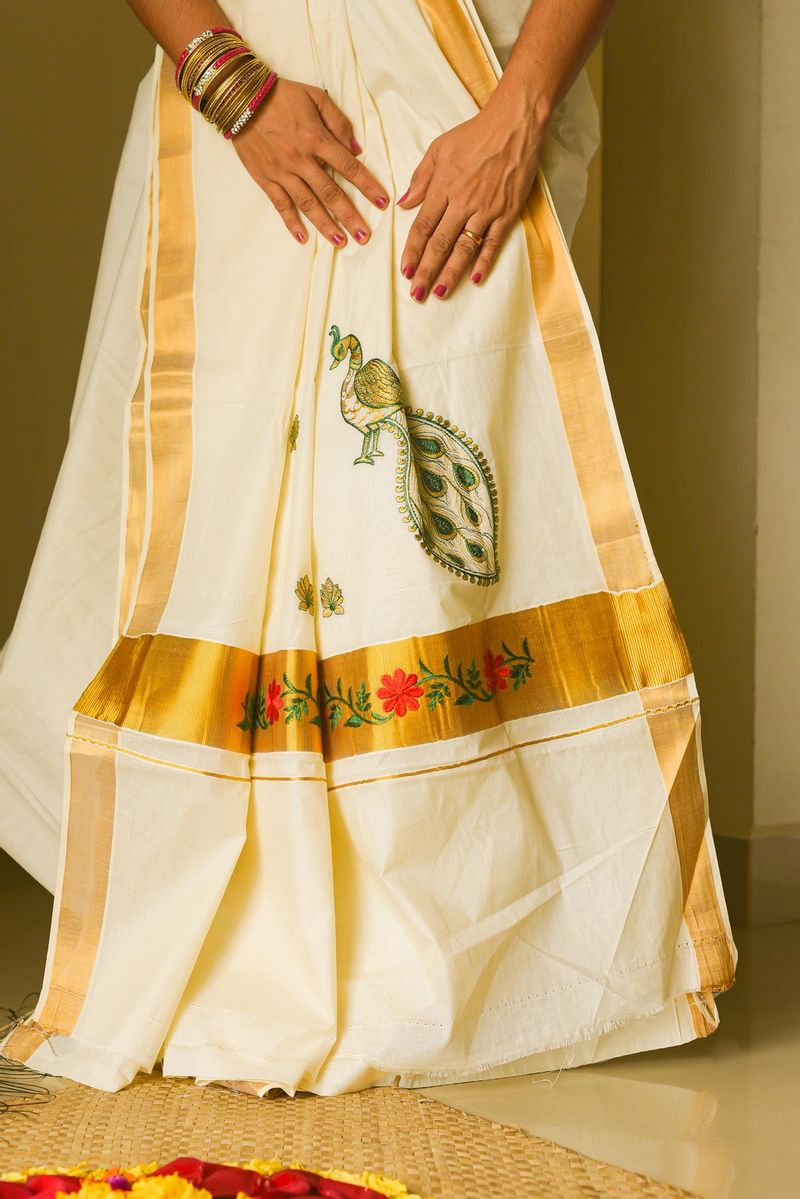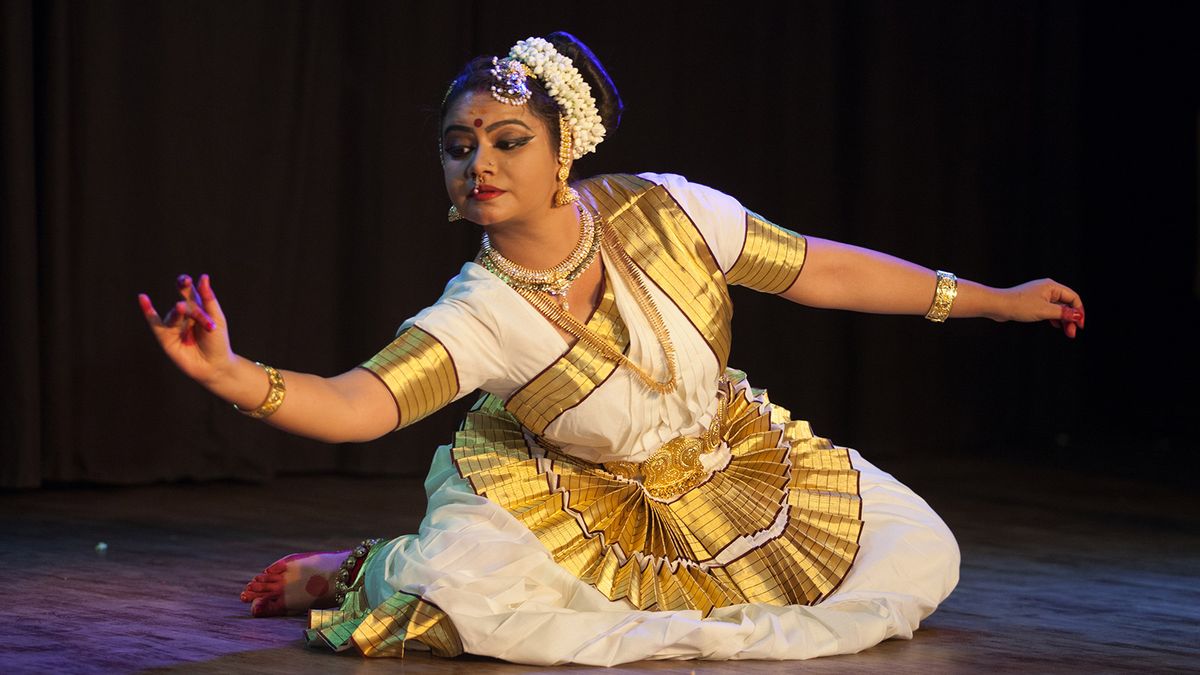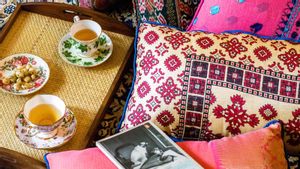The classic white-gold saree from Kerala — the kasavu — may have travelled beyond its shores but nothing can beat its crisp rustles and shimmer in temples and homes on Onam, the harvest festival. The 10-day Onam celebrations began yesterday and the demand for the kasavu is “still quite subdued but much better” than what it was in 2020 when the pandemic had made a stronghold in the coastal state.
In this land guarded by Lord Vishnu and also referred to as God’s own country, the traditional sartorial trend includes the saree, the mundu (sarong wrapped around the waist by men), and the set-mundu which is a two-piece sarong-saree. So, what is the kasavu? The kasavu is the golden zari which is sourced from Surat in Gujarat and woven into the borders of cream or white cotton sarees. The placement of the golden border has undergone a change over the years from the traditional bottom end of the ‘kaittari’ or ‘kaitthari’ (Malayalam word for handloom) saree and pallu (the trail that goes over the shoulder) to gold or silver all over, interspersed with embroidery, cut-work, hand painting, coloured buttis, and prints. A new bunch of designers is also experimenting with the fabric and the kasavu technique, using it not just in sarees and salwar-kameez sets but also for home furnishings like curtains, table runners, and cushion covers.
Origins of Kasavu

In November 2019, the union government anointed three clusters — Balaramapuram (Thiruvananthapuram), Chendamangalam (Ernakulam) and Kuthampully (Thrissur), with the Geographical Indication or GI tag for the handloom or kaithari products that weave the Kerala kasavu saree. The GI tag is a sign used on products that have a specific geographical origin.
Tracing the history of the kasavu reveals that it takes after the mundu-neriyathu and finds mention in Buddhist literature as the ‘sattika’. The mundu here is called the ‘antariya’ and the cloth covering the upper part of the body as the ‘uttariya’, which in the local language is called the ‘neriyathu’. The golden border that typically gives the kasavu saree its identity is said to have been inspired by the Greco-Roman ‘palmyrene’. Imagine those ancient Grecian-Roman statues clad in flowy long robes and the trail of unstitched cloth with a fine or bold and thick border over the shoulder.
The kasavu came to Kerala when rulers of yore like Maharaja Balarama Varma, after whom Balaramapur is named, brought weavers from faraway lands to weave attire for the royal family. Over time, these clothes began to be worn by the commoners but only for special and religious occasions. Today, no trousseau is complete without the kasavu saree.
At Koothampalli in Thrissur district the story is similar except that the royal who brought the kattihari saree was from the royal family of Cochin. Here the kasavu is also woven with half-fine zari thus reducing the cost of the product by half and at times even more. In Chendamangalam, the weavers were patronised by the Paliam family who served as chief ministers of the Cochin rulers.
The laborious weaving technique for sarees which use gold or silver kasavu make them heirloom investments. Says Nandu VS, the managing partner of Kasavukada, the third generation from a family of weavers who today employ 3000 looms all over Kerala weaving the kasavu sarees, mundus and set-mundus, “The cost of a saree made of pure kasavu starts from INR 2,000 and can go up to a whopping 2 lakh, depending on the design.”
The demand for the kasavu saree across the 11 Kasavukuda outlets is low, he rues, adding that COVID has ensured that the purchasing power of the consumer has dipped.
Keeping on trend

Anish Rajendra of Thiruvananthapuram-based Karalkada, which claims to be one of the oldest and only brands in the city to sell authentic, pure zari handwoven kasavu material, says, “We source pure zari from Surat and each saree is a product of trust (as the name Karalkada signifies). With only two stores, an online presence and 25 weavers, the cost of a kasavu saree begins at INR 8,500 and goes up to INR 4 lakh.”
He bemoans that COVID has hit business hard. “We still manage to get our loyal customers back but the purchasing capacity has definitely fallen immensely in comparison to 2019,” he adds.
Talking about trends, he says the latest include jacquard motifs using pure gold zari, the Onam-related themes with the evergreen mango buttis and temples. “We have also included colour kasavus to our traditional range of off-white and gold, and these retail at INR 3,800,” he says.
The demand at Pothys, which has 15 stores across the country and also retails the kasavu saree, is also down because of Covid, he tells us.
In these trying times, you can do your bit by looking up these clusters, weavers, brands and designers online and ensure that the kasavu is not missing from your collection of sarees.




